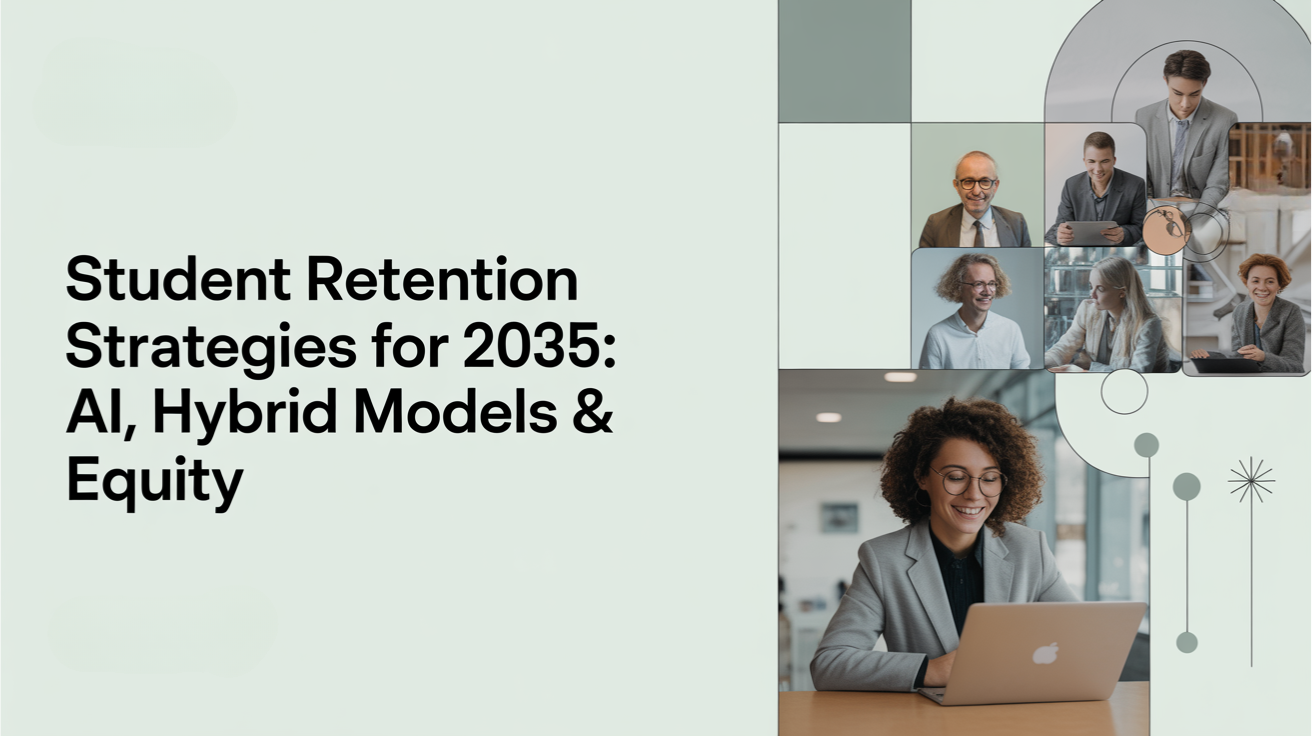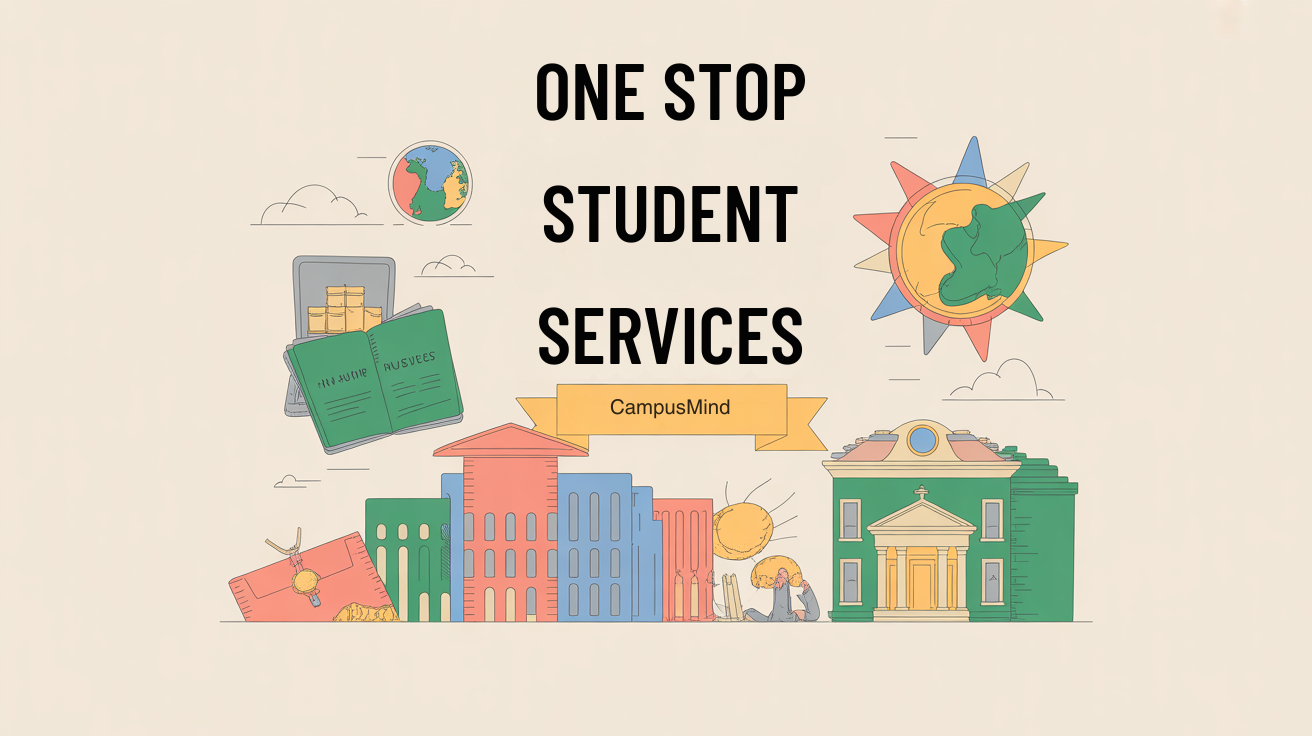Something shifted around midterms last semester at North Carolina State. Students who'd been managing their coursework suddenly looked exhausted—not the normal "I stayed up late studying" tired, but a deeper kind of depletion. The difference? This exhaustion came with cynicism about classes that had once excited them, and a creeping sense that nothing they did made any difference.
That's academic burnout, and it's affecting more students than you might think. Effective student burnout prevention strategies have become essential as this problem grows.
Recent longitudinal research tracking university students throughout entire semesters reveals a troubling pattern: burnout symptoms don't just appear randomly. They build linearly as the term progresses, with particularly sharp increases during midterm periods when demands pile up without corresponding relief [1]. Over half of college students now experience some form of this chronic exhaustion, and the consequences go beyond feeling tired—they directly threaten persistence and degree completion [2]. That’s why institutions are increasingly seeking student burnout prevention strategies grounded in research rather than guesswork.
For campus leaders watching retention rates, here's the sobering connection: students showing burnout symptoms report significantly higher intentions to drop out, with chronic cases seeing a 35% consideration rate for leaving [3]. When we talk about preventing burnout, we're not just discussing wellness—we're addressing a fundamental retention challenge that requires well-designed student burnout prevention strategies.
When and Why Burnout Takes Hold
Understanding the timeline matters. A three-wave study of 1,435 undergraduate students found that all three burnout dimensions—emotional exhaustion, cynicism, and reduced professional efficacy—increase steadily across a semester [4]. But not all students experience this trajectory equally.
Female students, STEM majors, and those at both extremes of their academic journey (brand-new freshmen and advanced students juggling multiple commitments) show particularly elevated risk [4]. These aren't just demographic curiosities; they're signals about where targeted student burnout prevention strategies will matter most.
The pandemic certainly didn't help. Global burnout rates among university students showed 56.3% experiencing high emotional exhaustion and 55.3% showing high cynicism during COVID-19 [5]. While campuses have returned to in-person instruction, many of the underlying pressures remain.
What Institutions Can Actually Do

Telling students to "practice self-care" while maintaining crushing schedules isn't a strategy—it's abdication. Real prevention requires structural changes that make wellbeing compatible with academic excellence. The strongest student burnout prevention strategies occur at the institutional level.
Strategic Breaks: Beyond Spring Break
Multiple universities across North Carolina—including NC State and UNC-Chapel Hill—now build wellness days into their academic calendars [6]. These institutional pauses are designed to serve as concrete student burnout prevention strategies by creating non-negotiable recovery windows.
However, the policy only works when entire campuses pause together. Students report that when assignments cluster before or after wellness days, the impact disappears [8]. One or two wellness days per semester cannot solve systemic overload, but they help when paired with broader reforms.
Not everyone's convinced these days make a difference, and they're partially right. One wellness day per semester can't counteract systemic overload the other 70+ days. But paired with other interventions, strategic breaks signal institutional commitment to student wellbeing and provide crucial recovery windows during high-stress periods.
Teaching for Learning, Not Just Evaluation
Here's something many faculty don't realize: the way they structure courses directly influences student burnout. Research on teacher burnout prevention found that training in specific pedagogical approaches—including breaking large assignments into manageable steps, providing clear rubrics, and building in flexibility—reduces stress without compromising learning outcomes [9].
When sociology professor Jessica Calarco shifted her teaching philosophy from "holding students accountable" to "giving students opportunity to learn," she found students more willing to take care of themselves, which ultimately enhanced their capacity to engage meaningfully with course material [10]. This isn't about lowering standards. It's about recognizing that assessment-heavy, inflexible structures often measure endurance more than mastery.
Faculty benefit from professional development focused on inclusive teaching practices that reduce unnecessary stressors. This means learning to distinguish between "rigorous" and "rigid," and understanding that students don't need artificial obstacles to demonstrate competence—they need clear pathways to meet genuinely high expectations.
Advising That Goes Beyond Course Selection
Traditional academic advising focuses on what classes to take. Advising for retention needs to include when and how many courses make sense given a student's full circumstances.
Proactive advising means regular check-ins during predictable high-stress periods, helping students recognize warning signs before burnout becomes entrenched, and having honest conversations about course load pacing. Many universities now embed advising as an integral part of student burnout prevention strategies.
Institutions implementing early alert systems that flag engagement declines can identify at-risk students, but only if those systems connect to actual intervention capacity [11]. Technology that spots problems means little without advisors who have time to respond meaningfully.
What Students Can Control (And What They Can't)

Individual strategies matter, but let's acknowledge upfront: telling an overextended student to "just manage time better" when the actual problem is unrealistic demands feels dismissive. That said, students do have agency in how they navigate academic pressures.
Letting Go of Perfect
Perfectionism and burnout feed each other. A systematic review of interventions found that mindfulness-based approaches—which often include components addressing perfectionist thinking—showed evidence of reducing burnout symptoms across studies [12]. These approaches are increasingly included in student workshops as supportive student burnout prevention strategies.
Practical translation? Learning to distinguish between "good enough" and perfect saves substantial energy. The Pomodoro technique—25-minute focused work sessions followed by 5-minute breaks—helps maintain concentration without exhaustion [13]. But more importantly, it enforces the concept that sustainable productivity includes rest, not just output.
Connection as Protection
Longitudinal research examining stress and burnout pathways found that social support plays both direct and indirect roles in reducing burnout [14]. Students with stronger perceived support—from family, friends, and faculty—showed lower burnout levels, which in turn enhanced academic performance and wellbeing.
This isn't about networking for career advantage. It's about belonging. Students who engage in campus activities aligned with genuine personal interests (not just resume-builders), maintain connections with peers, and build relationships with at least one faculty member or staff mentor demonstrate greater resilience against burnout's isolating effects.
Joining a club related to something you actually care about—whether that's ultimate frisbee, cultural organizations, or tabletop gaming—provides refreshment that counterbalances academic pressure. These aren't distractions from "real" college work; they're part of what makes persistence possible.
Recognizing Your Own Red Flags
Students often don't realize they're burning out until they're deep in it. Self-awareness matters. When sleep suffers despite spending time in bed, when classes that sparked interest now feel like drudgery, when irritability increases and motivation plummets—these signal burnout's approach, not personal failure.
Students noticing these patterns need to take them seriously: talk with advisors, consider adjusting course loads, access counseling services before reaching crisis. Most campuses offer free or low-cost mental health support. Using these resources isn't weakness—it's strategic self-care that protects your investment in education.
Excellence Through High Expectations And High Support
The best prevention approaches reject false choices between rigor and wellbeing. Georgetown University's research on student success found that students rise to challenges when provided appropriate scaffolding, reasonable timelines, and permission to be human [15]. Strong academic programs can maintain high standards while providing robust support structures—in fact, the strongest programs do exactly that.
Campus leaders concerned about retention should view burnout prevention as essential infrastructure, comparable to academic advising systems or technology platforms. Wellness days, faculty training in inclusive pedagogy, proactive early interventions, and accessible mental health services aren't luxuries or concessions. They're the foundation that enables rigorous learning to happen without breaking students in the process.
For students themselves, remember: making it through college requires sustaining yourself for the entire journey. Strategic prevention—building in breaks, maintaining connections, asking for help when you need it, protecting your wellbeing—isn't self-indulgence. It's the practical work of ensuring you're still standing, engaged, and learning when graduation finally arrives.
Burnout doesn't have to be an inevitable rite of passage in higher education. With intentional institutional policies and smart individual student burnout prevention strategies, we can create academic environments where both rigor and wellbeing not only coexist—they reinforce each other.
Frequently Asked Questions
What are the early warning signs that a college student is experiencing burnout?
Early burnout indicators include persistent fatigue that doesn't improve with rest, loss of motivation toward previously engaging coursework, increased irritability or emotional reactivity, difficulty concentrating even during low-stress tasks, and developing cynical attitudes toward academic work. Physical symptoms like frequent headaches, disrupted sleep patterns, or increased illness susceptibility often accompany emotional exhaustion. According to longitudinal research tracking students across semesters, these symptoms typically intensify during midterm periods when academic demands peak without corresponding relief. Students noticing multiple symptoms should reach out to academic advisors or campus counseling services—early intervention prevents burnout from becoming entrenched and threatening academic persistence.
Do wellness days actually help prevent student burnout, or are they just symbolic gestures?
Wellness days can effectively reduce burnout when implemented properly, but many fall short of their potential. The key difference lies in coordination: NC State University explicitly asks faculty to avoid scheduling exams or deadlines on wellness days and the following day, creating genuine recovery time. When entire campuses pause together, students can truly rest rather than catching up on work from other classes. However, research shows effectiveness depends on broader context—one wellness day per semester can't compensate for chronic overload. Students at several North Carolina universities report assignments still clustering around these breaks, defeating their purpose. Wellness days work best as part of comprehensive prevention strategies that include flexible teaching policies, accessible mental health resources, and workload management support, not as standalone solutions to systemic stressors.
How can colleges maintain academic rigor while implementing burnout prevention strategies?
Maintaining high academic standards while preventing burnout isn't contradictory—it requires rethinking how rigor is demonstrated. Research on effective teaching practices shows that breaking large assignments into manageable components, providing clear rubrics and expectations, and building in reasonable flexibility actually enhances learning outcomes while reducing unnecessary stress. The key is distinguishing between "rigorous" (intellectually demanding, requiring genuine mastery) and "rigid" (inflexible structures that test endurance rather than understanding). Georgetown research on student success demonstrates that students rise to challenging expectations when provided appropriate scaffolding, reasonable timelines, and support structures. Faculty training in inclusive pedagogy helps instructors design assessments that measure actual competence rather than stress tolerance. Strategic course load pacing—occasionally taking fewer credits to maintain quality engagement—often produces better learning than maxing out credits while burning out.
What role does social support play in protecting students from academic burnout?
Social support functions as both direct protection against burnout and an indirect buffer that moderates stress effects. Longitudinal studies examining burnout pathways found that students with stronger perceived support from family, friends, and faculty showed significantly lower burnout levels across all three dimensions: emotional exhaustion, cynicism, and reduced efficacy. The mechanism works through multiple channels—social connections provide practical help (study partners, advice), emotional sustenance during difficult periods, and reminder that struggles are shared rather than individual failures. Importantly, the quality and authenticity of connections matters more than quantity. Students benefiting most from social support engaged in campus activities aligned with genuine personal interests rather than resume-building, maintained meaningful friendships, and built relationships with at least one faculty member or mentor. Isolation amplifies burnout's effects, while belonging counteracts them.
How does student burnout specifically impact college retention and graduation rates?
Student burnout demonstrates strong predictive relationships with dropout intentions and actual attrition. Research tracking undergraduate students found that higher initial burnout levels and increases in symptoms throughout semesters corresponded with significantly elevated dropout intentions. Students experiencing chronic burnout symptoms report 35% consideration rates for leaving college—substantially higher than peers without burnout. The mechanism is cyclical: burnout leads to declining academic performance (students with high burnout show 25% lower GPAs on average), which increases stress and further intensifies burnout, raising dropout risk. All three burnout dimensions—emotional exhaustion, cynicism, and reduced professional efficacy—independently predict withdrawal intentions, though cynicism shows the most consistent association. For institutions facing enrollment pressures, addressing burnout isn't just wellness programming—it's strategic retention infrastructure that protects both individual student success and institutional sustainability.
Can mindfulness and meditation really reduce academic burnout, or is that overhyped?
Mindfulness-based interventions show legitimate effectiveness for reducing student burnout, though they're not panaceas. A systematic review and meta-analysis examining 17 studies with 2,462 students found evidence supporting mindfulness interventions for reducing total burnout symptoms, with particularly strong effects on emotional exhaustion. The aggregated effect size across interventions reached statistical significance (g+ = 0.90, showing moderate to large practical impact). However, effectiveness varies by implementation—brief sessions integrated into daily routines show better adherence than lengthy standalone programs that add to students' time pressures. Mindfulness works partly by addressing perfectionist thinking patterns that fuel burnout and partly by developing awareness of stress signals before they become entrenched. The research suggests these practices complement rather than replace institutional prevention strategies like workload management and accessible mental health services. Students benefit most when mindfulness is one tool among several burnout prevention approaches rather than the sole strategy.
What specific changes can faculty make in their teaching to help prevent student burnout?
Faculty can significantly impact burnout prevention through specific pedagogical choices. Research on teacher training for inclusive education found several high-impact practices: breaking large assignments into smaller, manageable milestones with clear checkpoints; providing detailed rubrics that clarify expectations rather than leaving students guessing; offering reasonable flexibility for deadline extensions when students face genuine difficulties; and designing multiple pathways for demonstrating mastery rather than one-size-fits-all assessments. Faculty who shifted from "accountability-focused" to "learning-opportunity-focused" philosophies found students more willing to seek help and take care of themselves, ultimately enhancing engagement. Additionally, coordinating with colleagues about assignment clustering—avoiding multiple major deadlines in the same week across courses—reduces artificial stress peaks. Professional development in inclusive pedagogy helps faculty distinguish between maintaining genuine intellectual challenge and imposing unnecessary obstacles. The goal isn't reducing difficulty but structuring courses so rigorous expectations remain achievable without destroying student wellbeing.
Are certain college majors or student demographics more vulnerable to academic burnout?
Yes, burnout vulnerability varies significantly by both major and demographic factors. Longitudinal research tracking students found that STEM majors, female students, and those at both extremes of academic progress (first-year students and advanced students near graduation) showed particularly elevated burnout symptoms. Medical students report especially high rates—around 60% experience burnout—due to the combination of intense academic demands, clinical responsibilities, and high-stakes environments. Students from underrepresented groups often face additional stressors including feelings of isolation, stereotype threat, and lack of belonging that compound academic pressures. Students working more than 20 hours weekly show 160% higher dropout rates compared to non-working students, with burnout as a key mediating factor. Graduate students also report elevated rates (approximately 65%) compared to undergraduates, reflecting longer program duration and different stressor profiles. These patterns suggest targeted prevention efforts should focus particularly on high-risk groups rather than treating all students identically.
Works Cited
[1] Bäulke, L., Eckerlein, N., & Dresel, M. (2023). "Temporal development of student burnout symptoms: Sociodemographic differences and linkage to university dropout intentions." Learning and Individual Differences, 104, Article 102292. https://www.sciencedirect.com/science/article/abs/pii/S0361476X23000395. Accessed: 2024-10-20.
[2] BMC Psychology. (2025). "Stress, student burnout and study engagement—a cross-sectional comparison of university students of different academic subjects." BMC Psychology, 13, Article 126. https://bmcpsychology.biomedcentral.com/articles/10.1186/s40359-025-02602-6. Accessed: 2024-10-20.
[3] Jagodics, B., & Szabó, É. (2022). "Student Burnout in Higher Education: A Demand-Resource Model Approach." Trends in Psychology, 30, 731–754. https://link.springer.com/article/10.1007/s43076-021-00137-4. Accessed: 2024-10-20.
[4] Bäulke, L., Eckerlein, N., & Dresel, M. (2023). "Temporal development of student burnout symptoms." Learning and Individual Differences, 104. https://www.sciencedirect.com/science/article/abs/pii/S0361476X23000395. Accessed: 2024-10-20.
[5] Wathelet, M., Duhem, S., et al. (2024). "Burnout increased among university students during the COVID-19 pandemic: a systematic review and meta-analysis." Scientific Reports, 14, Article 2923. https://www.nature.com/articles/s41598-024-52923-6. Accessed: 2024-10-20.
[6] Daily Tar Heel. (2024). "Students and faculty reflect on university well-being days across North Carolina." https://www.dailytarheel.com/article/2024/03/dth-university-well-being-checks-days. Accessed: 2024-10-20.
[7] NC State Wolfpack Wellness. (2025). "Wellness Day." https://wellness.ncsu.edu/wellness-day/. Accessed: 2024-10-20.
[8] NPR. (2022). "Colleges are offering 'wellness days' to students. Not everyone is on board." https://www.npr.org/2022/11/06/1134608188/colleges-are-offering-wellness-days-to-students-not-everyone-is-on-board. Accessed: 2024-10-20.
[9] Soares, A., Santos, V., et al. (2023). "Interventions to Reduce Stress and Burnout among Teachers: A Scoping Review." International Journal of Environmental Research and Public Health, 20(9), 5625. https://pmc.ncbi.nlm.nih.gov/articles/PMC10178023/. Accessed: 2024-10-20.
[10] Higher Education Today. (2023). "Effective Strategies for Combating Faculty Burnout." https://www.higheredtoday.org/2023/05/18/effective-strategies-for-combating-faculty-burnout/. Accessed: 2024-10-20.
[11] Enrollify. (2024). "Understanding and Improving Retention Rates in Higher Education." https://www.enrollify.org/blog/understanding-and-improving-retention-rates-in-higher-education. Accessed: 2024-10-20.
[12] Harrer, M., Adam, S. H., et al. (2023). "Interventions to reduce burnout in students: A systematic review and meta-analysis." European Journal of Psychology of Education, 39, 1675–1708. https://link.springer.com/article/10.1007/s10212-023-00731-3. Accessed: 2024-10-20.
[13] Husson University. (2024). "How to Avoid Burnout in College." https://www.husson.edu/online/blog/2024/06/tips-to-avoid-college-burnout. Accessed: 2024-10-20.
[14] Hu, X., Zhang, Y., & Wang, L. (2025). "The relationship between stress and academic burnout in college students: evidence from longitudinal data on indirect effects." Frontiers in Psychology, 16, Article 1517920. https://www.frontiersin.org/journals/psychology/articles/10.3389/fpsyg.2025.1517920/full. Accessed: 2024-10-20.
[15] Natoli, R., Jackling, B., & Siddique, S. (2015). "Psychological Distress, Burnout, and Business Student Turnover: The Role of Resilience as a Coping Mechanism." Frontiers in Psychology, 13, Article 916154. https://pmc.ncbi.nlm.nih.gov/articles/PMC9243806/. Accessed: 2024-10-20.



